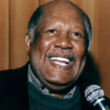My Jim: A Novel
(Libby/OverDrive eBook, Kindle)
Available Platforms
Description
More Details
Excerpt
Similar Titles From NoveList
Similar Authors From NoveList
Published Reviews
Booklist Review
This novel, evocative of slave narratives, explores what life must have been like for Jim, the slave who escapes down the Mississippi River with Huck Finn. But Jim's flight to freedom is only a backdrop to a story that is more about his wife, Sadie, and her fierce determination to survive the cruelties of slavery and to pass on the hopefulness of love to the next generation. When her granddaughter Marianne is frightened of leaving Louisiana in 1884 to make a new life with a buffalo soldier in the West, Sadie recalls the family's history as she makes a quilt for the young woman to take with her. Speaking in first-person dialect, Sadie recalls the loss of mother, children, and husband but also recalls the struggle to hold on to bits and pieces of family that she weaves into her story and the quilt. She recalls her talent for healing, her defiance of the master that eventually provoked her sale, and her abiding love for Jim, a slave she saw birthed into the world. This is a moving novel of American slavery and enduring love. --Vanessa Bush Copyright 2004 Booklist
Publisher's Weekly Review
In her spare, moving retelling of the story of escaped slave Jim from Mark Twain's The Adventures of Huckleberry Finn, Rawles shifts the focus to Jim's wife, Sadie, whose unspeakable losses set the tone for Jim's flight. Trained as a healer, Sadie helps bring Jim into the world when she herself is "no higher than a barrel." As they grow up together on Mas Watson's Missouri plantation, Jim only has eyes for Sadie, and after an informal marriage following their daughter Lizbeth's birth, they consider fleeing together. Their plans change when Mas Watson dies, and Sadie is taken by a hateful neighbor while Jim is kept on by Mas Watson's daughter. Jim finally escapes on his own, but is presumed dead when his hat is found floating in the Mississippi. After countless tribulations, Sadie meets up again with Jim, who has ventured down the Mississippi with Huck Finn in the meantime, but the pair are not reunited. Further disappointment comes after emancipation, when Sadie learns that freedom looks an awful lot like slavery. Writing in sonorous slave dialect, Rawles creates a memorable protagonist in Sadie and builds on Twain's portrayal of Jim while remaining true to the original. Agent, Victoria Sanders. (Jan.) Forecast: Like Jean Rhys in Wide Sargasso Sea, Rawles sketches an impressionistic portrait of a secondary 19th-century fictional character. This is a skillful addition to a small subcanon and may find a place on some high school reading lists. (c) Copyright PWxyz, LLC. All rights reserved
School Library Journal Review
Adult/High School-Rawles turns an American classic on its head with this story of Sadie Watson, the wife Jim left behind when he joined Huck Finn on his adventure down the Mississippi. As a child, Sadie helps deliver Jim in a tobacco field. Her mother, the midwife, comforts his mother, "This baby might buy you freedom, one day." As an adult, Jim is obsessed with that freedom, but his schemes are continually thwarted. Once he and Sadie "jump the broom," he refuses to leave without his family. Circumstances change when their master, Watson, dies and Sadie and her children are sold. When Jim tries to visit her, he is caught and beaten, and finally runs away. His hat is found floating on the Mississippi, and he is feared drowned. Sadie, however, never gives up hoping for his return. My Jim is a love story. But it is also a vivid portrayal of Jim's other life-harsh at times, poignant at others. Even young adults unfamiliar with Huckleberry Finn's companion will find Rawles's tale moving and real. The author creates a heartbreaking world where farewells to husbands, wives, and children are common.-Patricia Bangs, Fairfax County Public Library System, VA (c) Copyright 2010. Library Journals LLC, a wholly owned subsidiary of Media Source, Inc. No redistribution permitted.
Library Journal Review
Told entirely in dialect, this first-person narrative features Sadie, a third-generation slave emancipated during the Civil War. Sadie is making a quilt with her granddaughter, Marianne Libre, who was born free and must decide whether to marry and move away or remain with the grandmother who raised her. This inspires Sadie to tell the story of her own separation and loss. It is Sadie's story, but it is an archetypal story likely shared in some form by most slaves. In particular, Sadie recalls her husband, Jim, and their two children. Jim was sold away and later escaped to freedom with none other than Huckleberry Finn (a surprising detail that is not further developed). Sadie was later sold away from her children, neither of whom survived to freedom. As Sadie tells this story, she clearly depicts both her inner life and the details of her daily existence. The intimate and immediate nature of the narrative draws the reader quickly into Sadie's story of physical and emotional pain. Rawles won the American Book Award for her first novel, Love Like Gumbo; this new work is highly recommended for all YA and academic fiction collections.-Rebecca Stuhr, Grinnell Coll. Libs., IA (c) Copyright 2010. Library Journals LLC, a wholly owned subsidiary of Media Source, Inc. No redistribution permitted.
Kirkus Book Review
A tale of slave life in the Old South imagines the hidden life of Huck Finn's sidekick, the runaway slave Jim. It's always risky to build a narrative around someone else's characters, but second-novelist Rawles (Crawfish Dreams, 2003) handles Twain's creations so deftly that it would be hard to imagine him objecting. Her narrator is one Sadie Watkins, an elderly sharecropper who was born a slave in Missouri. Growing up on the Watson plantation, Sadie met and fell in love with one of the field hands, a big, dapper slave named Jim. As masters go, Watson is better than most, but he's still a long way from what anyone would call kindly. He doesn't think twice about selling Jim downriver to raise some cash when his crops do badly, despite the fact that Jim and Sadie are married and have two children. Jim is a gentle soul not given to rebellion, but he runs away to make his own fate, promising Sadie that he'll come back to her and the children when he can buy their freedom. Jim's story we already know, of course, since he hooked up with a boy named Huck Finn and rafted his way up the Mississippi. But Sadie's history is just as engaging, if rather less adventurous. Passed along like a poker chip from master to master, Sadie lives through the Civil War, gains her freedom, becomes a refugee, and makes and re-makes several lives for herself down the years. She and Jim are reunited and parted several times, but there are few happy endings for blacks (whether slave or free) in the 19th century. Her hopes eventually center upon her niece Marianne, born a freewoman, who as part of the new generation has the chance of a decent life. Intensely sad but not mawkish: a very fine love story, wonderfully narrated with a perfect feel for the time and place. Copyright ©Kirkus Reviews, used with permission.
Booklist Reviews
This novel, evocative of slave narratives, explores what life must have been like for Jim, the slave who escapes down the Mississippi River with Huck Finn. But Jim's flight to freedom is only a backdrop to a story that is more about his wife, Sadie, and her fierce determination to survive the cruelties of slavery and to pass on the hopefulness of love to the next generation. When her granddaughter Marianne is frightened of leaving Louisiana in 1884 to make a new life with a buffalo soldier in the West, Sadie recalls the family's history as she makes a quilt for the young woman to take with her. Speaking in first-person dialect, Sadie recalls the loss of mother, children, and husband but also recalls the struggle to hold on to bits and pieces of family that she weaves into her story and the quilt. She recalls her talent for healing, her defiance of the master that eventually provoked her sale, and her abiding love for Jim, a slave she saw birthed into the world. This is a moving novel of American slavery and enduring love. ((Reviewed November 15, 2004)) Copyright 2004 Booklist Reviews.
Library Journal Reviews
Told entirely in dialect, this first-person narrative features Sadie, a third-generation slave emancipated during the Civil War. Sadie is making a quilt with her granddaughter, Marianne Libre, who was born free and must decide whether to marry and move away or remain with the grandmother who raised her. This inspires Sadie to tell the story of her own separation and loss. It is Sadie's story, but it is an archetypal story likely shared in some form by most slaves. In particular, Sadie recalls her husband, Jim, and their two children. Jim was sold away and later escaped to freedom with none other than Huckleberry Finn (a surprising detail that is not further developed). Sadie was later sold away from her children, neither of whom survived to freedom. As Sadie tells this story, she clearly depicts both her inner life and the details of her daily existence. The intimate and immediate nature of the narrative draws the reader quickly into Sadie's story of physical and emotional pain. Rawles won the American Book Award for her first novel, Love Like Gumbo; this new work is highly recommended for all YA and academic fiction collections.-Rebecca Stuhr, Grinnell Coll. Libs., IA Copyright 2004 Reed Business Information.
Publishers Weekly Reviews
In her spare, moving retelling of the story of escaped slave Jim from Mark Twain's The Adventures of Huckleberry Finn, Rawles shifts the focus to Jim's wife, Sadie, whose unspeakable losses set the tone for Jim's flight. Trained as a healer, Sadie helps bring Jim into the world when she herself is "no higher than a barrel." As they grow up together on Mas Watson's Missouri plantation, Jim only has eyes for Sadie, and after an informal marriage following their daughter Lizbeth's birth, they consider fleeing together. Their plans change when Mas Watson dies, and Sadie is taken by a hateful neighbor while Jim is kept on by Mas Watson's daughter. Jim finally escapes on his own, but is presumed dead when his hat is found floating in the Mississippi. After countless tribulations, Sadie meets up again with Jim, who has ventured down the Mississippi with Huck Finn in the meantime, but the pair are not reunited. Further disappointment comes after emancipation, when Sadie learns that freedom looks an awful lot like slavery. Writing in sonorous slave dialect, Rawles creates a memorable protagonist in Sadie and builds on Twain's portrayal of Jim while remaining true to the original. Agent, Victoria Sanders. (Jan.) Forecast: Like Jean Rhys in Wide Sargasso Sea, Rawles sketches an impressionistic portrait of a secondary 19th-century fictional character. This is a skillful addition to a small subcanon and may find a place on some high school reading lists. Copyright 2004 Reed Business Information.
School Library Journal Reviews
Adult/High School-Rawles turns an American classic on its head with this story of Sadie Watson, the wife Jim left behind when he joined Huck Finn on his adventure down the Mississippi. As a child, Sadie helps deliver Jim in a tobacco field. Her mother, the midwife, comforts his mother, "This baby might buy you freedom, one day." As an adult, Jim is obsessed with that freedom, but his schemes are continually thwarted. Once he and Sadie "jump the broom," he refuses to leave without his family. Circumstances change when their master, Watson, dies and Sadie and her children are sold. When Jim tries to visit her, he is caught and beaten, and finally runs away. His hat is found floating on the Mississippi, and he is feared drowned. Sadie, however, never gives up hoping for his return. My Jim is a love story. But it is also a vivid portrayal of Jim's other life-harsh at times, poignant at others. Even young adults unfamiliar with Huckleberry Finn's companion will find Rawles's tale moving and real. The author creates a heartbreaking world where farewells to husbands, wives, and children are common.-Patricia Bangs, Fairfax County Public Library System, VA Copyright 2005 Reed Business Information.
Reviews from GoodReads
Citations
Rawles, N. (2007). My Jim: A Novel . Random House Publishing Group.
Chicago / Turabian - Author Date Citation, 17th Edition (style guide)Rawles, Nancy. 2007. My Jim: A Novel. Random House Publishing Group.
Chicago / Turabian - Humanities (Notes and Bibliography) Citation, 17th Edition (style guide)Rawles, Nancy. My Jim: A Novel Random House Publishing Group, 2007.
Harvard Citation (style guide)Rawles, N. (2007). My jim: a novel. Random House Publishing Group.
MLA Citation, 9th Edition (style guide)Rawles, Nancy. My Jim: A Novel Random House Publishing Group, 2007.
Copy Details
| Collection | Owned | Available | Number of Holds |
|---|---|---|---|
| Libby | 1 | 1 | 0 |
































